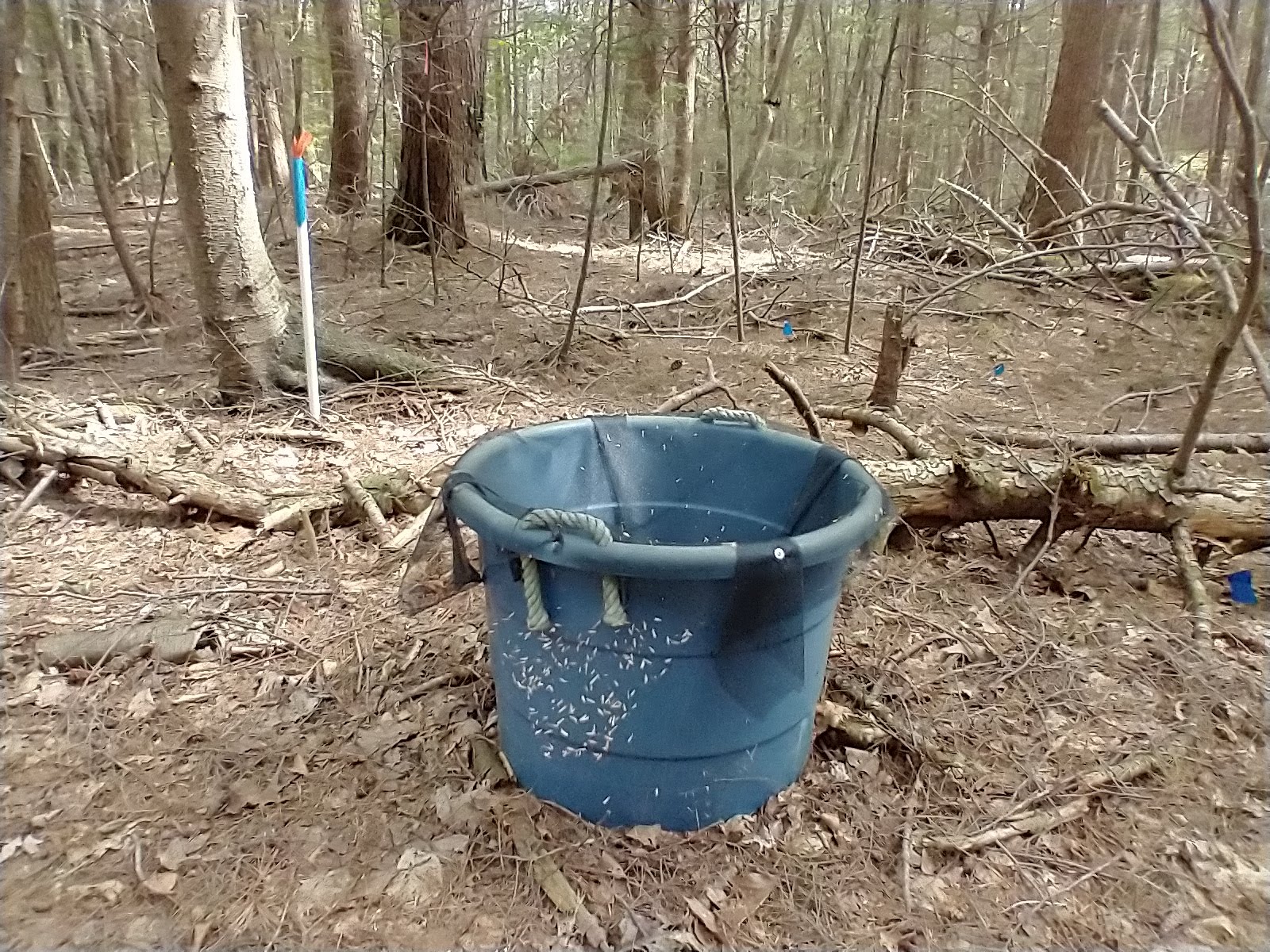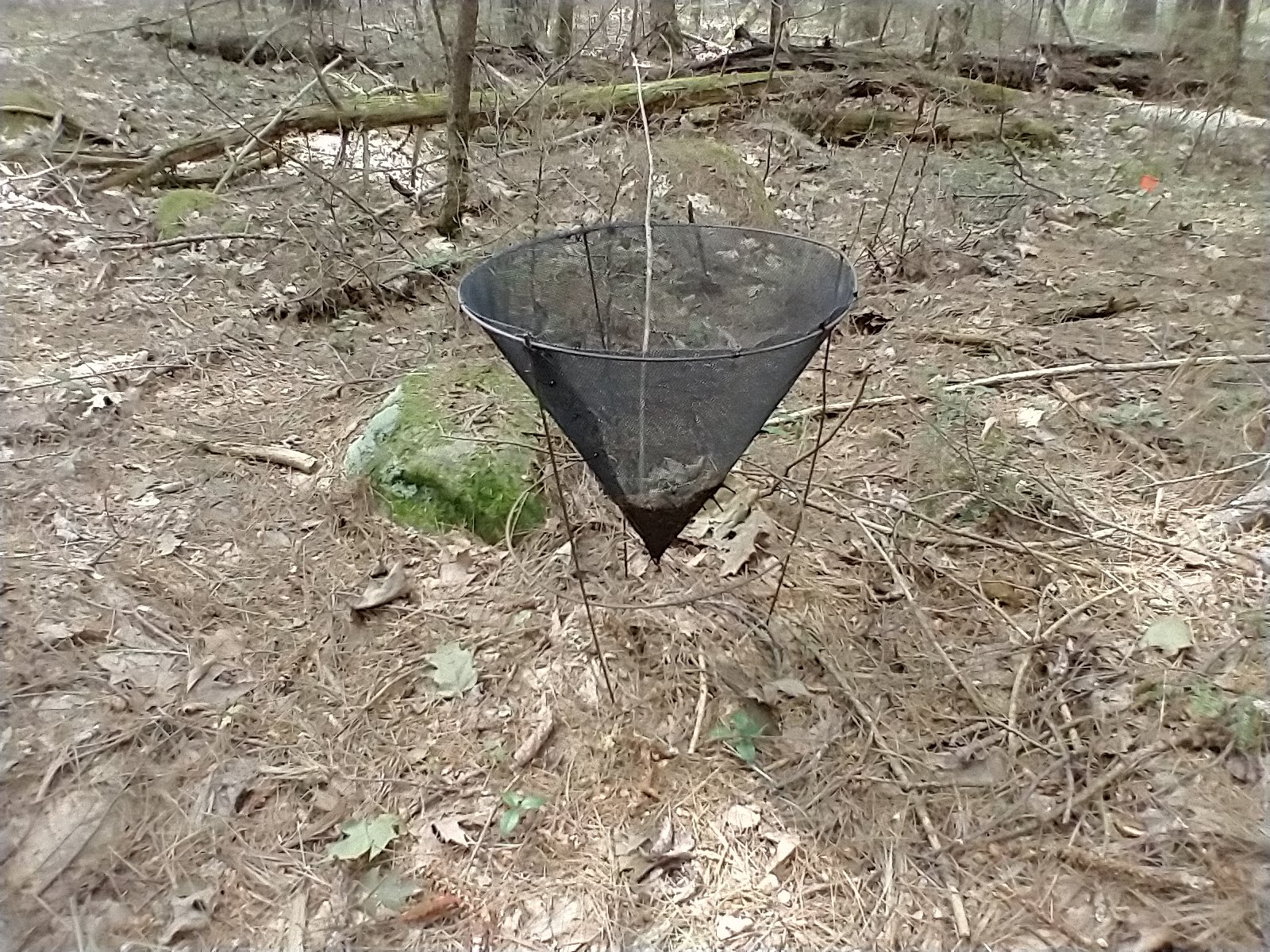Long-term litterfall mass data from Harvard Forest was used in conjunction with data from the National Ecological Observatory Network (NEON) and a global litterfall dataset to draw conclusions on patterns of litter inputs in temperate deciduous forests, which have implications for carbon and nutrient cycling.
By Jenna Zukswert, Ph.D. Candidate at SUNY ESF

Blast from the Past
Dr. Fiona Jevon, a postdoctoral scholar at Yale University, found herself in a relatable situation for many ecologists during the COVID-19 pandemic when her fieldwork was unexpectedly canceled. In response, she steered away from fieldwork and instead focused on what she could learn from publicly available datasets. In doing so, Jevon turned her focus towards “litterfall”, or the amount of leaves, buds, twigs, seeds, and flowers that fall from trees.
Litterfall mass is often collected alongside other data, yet litterfall itself is rarely the focus of ecological inquiry. In biogeochemical models, litterfall is often assumed to scale with net primary production, but this estimate may not necessarily be accurate. The abundance of data available on litterfall mass, but lack of studies explicitly examining the factors that influence litterfall mass, presented an opportunity for Jevon and her team to clarify patterns in litterfall mass across space and time.

Credit: Greta VanScoy, CC BY-SA 4.0.
Jevon and her colleagues noted that the National Ecological Observatory Network, or NEON, could provide a strong spatial framework to answer questions about litterfall patterns across space, but for questions related to temporal variation in litterfall patterns, they would need a dataset that looked at litterfall mass over time. Upon determining that they would need other sources of data, Jevon was reminded of her past.
“I realized, ‘Oh, wait! Ten years ago, when I was an undergraduate, and I spent hours of my life sorting leaf litter in a basement lab at Harvard, that data exists somewhere… and it’s publicly available’,” Jevon recalls. This led her to reach out to her former advisor, Dr. J. William Munger, whom she met during a Research Experience for Undergraduates (REU) program in 2010 when she started processing the samples that became this Harvard Forest LTER dataset. “This paper was very full-circle for me,” Jevon explains.
Focusing on Litterfall
Litterfall at the Harvard Forest LTER has been measured as early as 1989 in several distinct studies. A longer-term litterfall mass record also exists in the footprint of their eddy covariance tower and has been measured since at least 2000. Jevon and her team brought together these existing litterfall mass datasets from the Harvard Forest LTER, along with NEON litterfall data from 12 other mixed-temperate forest sites (including Harvard Forest) and a global database of litterfall mass compiled by Holland et al. (2015) to explore patterns in litterfall mass across space and time.

Perhaps their largest takeaway is that litterfall varies with climate both spatially and temporally, and by the trees’ functional group. Both the NEON and Harvard Forest LTER datasets showed greater litterfall mass in warmer and wetter areas, and following warmer temperatures and wetter conditions. Conifers produced less litter than broadleaved tree species. Interestingly, relationships with climate were different for broadleaf and conifer litter, too. Broadleaf litter was higher with higher spring temperatures, while conifer litterfall mass was higher with higher temperatures from the previous autumn.Two other takeaways are that 1) not all litter is leaf material and 2) not all litter falls in autumn. In fact, only 72% of litter consists of leaves. While 88% of that leaf litter falls in autumn, which is often the only season during which when many other studies collect litter, only about 61% of needles, 37% of fine woody debris, and 43% of reproductive material fall in the autumn. “When we think about all of the other things that fall out of the canopy and onto the forest floor… they fall all of the time, and they have different peaks.”

Credit: Greta VanScoy, CC BY-SA 4.0.
Improving Carbon and Nutrient Flux Projections
Litter serves as a crucial input of carbon and nutrients to the forest floor. It is therefore an important component of biogeochemical models used to understand and predict nutrient cycling rates. These models can help us better understand and predict how primary production and nutrient cycling in forests will be affected by global change. Overlooking non-leaf litter, and litter that falls in the spring and summer, can alter and underestimate carbon and nutrient fluxes from litter, which can affect model projections. Furthermore, this study shows that litterfall may be affected by environmental factors such as climate, but these effects are often not directly accounted for in models. Jevon recommends collecting litter year round and paying attention to the non-leaf litter, considering how differences in the chemistry of this fraction could influence carbon and nutrient cycling rates.
A strength in this study lies in combining these multiple datasets to obtain a clear, thorough perspective on litterfall mass patterns, with NEON addressing spatial questions, LTER addressing temporal questions, and the global litterfall dataset addressing the generalizability of their findings. Regarding this synergy between NEON and LTER data, Jevon noted that, “It’s awesome to be able to find something that has really good synergy between the two. And yeah, they’re set up so differently that it can sometimes be hard, I think, to find that. But when you do, it’s super powerful.”










